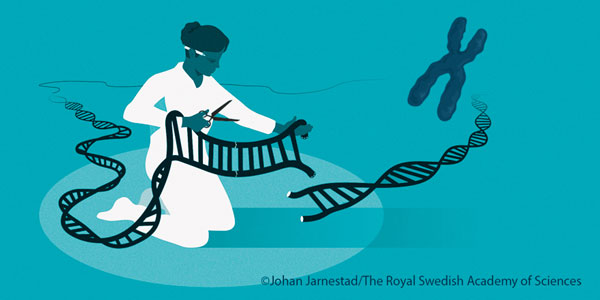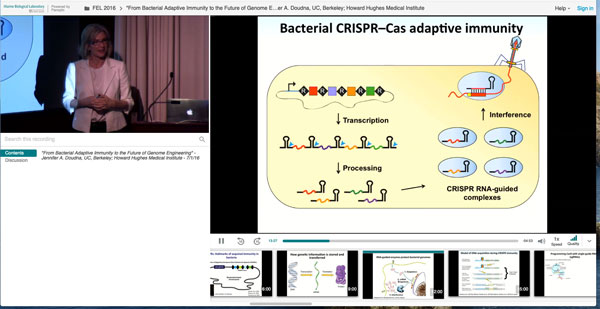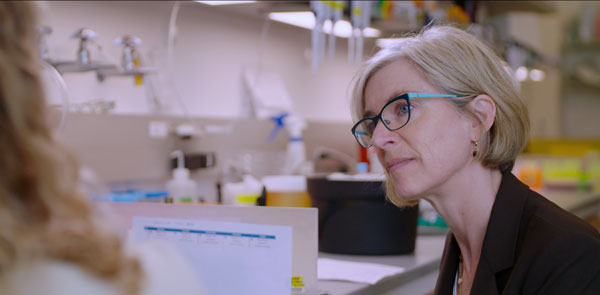Nobel Prize to CRISPR Pioneers Highlights the Power of Basic Research

It wasn’t a question of if, but when, a Nobel Prize would recognize the red-hot genome-editing tool called CRISPR-Cas9, which enables scientists to change the DNA of animals, plants and microorganisms with extremely high precision. Introduced just eight years ago, CRISPR was swiftly adopted by research labs worldwide; it has profoundly accelerated biological discovery and its consequent applications in medicine and agriculture.
So when the Nobel Prize in Chemistry was awarded this week to two pioneers of the CRISPR technology -- Jennifer A. Doudna of the University of California, Berkeley, and Emmanuelle Charpentier of the Max Planck Unit for the Science of Pathogens in Berlin, Germany – a cheer rose in the international scientific community.
“CRISPR revolutionizes what basic biologists are able to do. It has made an enormous difference in both the questions we can ask and the kind of answers we can obtain,” says MBL Director Nipam Patel.

“This technology has revolutionized the molecular life sciences, brought new opportunities for plant breeding, is contributing to innovative cancer therapies and may make the dream of curing inherited diseases come true,” the Nobel Foundation announced.
Doudna told the fascinating story of CRISPR-Cas9’s discovery in a MBL Friday Evening Lecture in 2016 (a recording is here). While it had been just four years since she and Charpentier worked out the CRISPR-Cas9 system, this easy-to-adopt, highly efficient “genetic scissors” had already spread like wildfire in the scientific community.
“I really want to communicate that this is a story of serendipity,” Doudna told the full house in Lillie Auditorium. “It’s a story about science going in a very different direction than the scientists originally anticipated. For me, that’s what I love about research – we don’t know where it’s going to end up.”
From Basic Research to a Biotech Revolution
When Doudna first met Charpentier in 201l, both were interested in how bacteria defend themselves from invading viruses. At the time, elements of the CRISPR-Cas9 system had already been observed in bacteria, and it seemed clear they operated as some kind of adaptive immunity to ward off viral infections. How it worked was not understood.
“Emmanuelle and I realized that our labs had very complementary types of expertise, and this would be a great opportunity to collaborate,” Doudna said in her Friday Evening Lecture.
 Jennifer Doudna giving a Friday Evening Lecture in Lillie Auditorium in 2016.
Jennifer Doudna giving a Friday Evening Lecture in Lillie Auditorium in 2016.Their labs first figured out the function of the Cas9 protein. Then they kept going, detailing how the CRISPR-Cas9 system “cuts and pastes” sequences of invading viral DNA into the bacteria’s genome, allowing it to recognize and destroy the virus should it invade again.
Serendipitously, Doudna said, it turned out that “in bacteria, CRISPR-Cas9 has evolved as a very flexible system for DNA manipulation. It has certain properties about the way it can find, bind and cut DNA that naturally lend themselves to being harnessed as a technology. Of course, we didn’t know that in the beginning, but that turned out to be the case.”
The day her lab realized that CRISPR-Cas9 could be programmed to cut DNA at any predetermined site “was a really exciting moment,” she said. Since then, labs worldwide have harnessed CRISPR to efficiently cut-and-insert DNA in all kinds of species, from plants to humans.
For basic scientists, CRISPR-Cas9 vastly accelerates and enables experimental research in an unlimited range of organisms beyond those typically found in labs, such as mice. While it previously took years of arduous effort to accomplish one targeted change in the genome of a research organism, CRISPR allows labs to make multiple genetic changes in a matter of months.
“Now we are seeing CRISPR being used in all manner of organisms to answer both basic biological questions and those more directly relevant to health,” Patel says. “It’s a whole different ballgame.”
In addition to propelling important discoveries in basic research, CRISPR has allowed plant researchers to develop crops that withstand mold, pests and drought. In medicine, clinical trials of new cancer therapies using CRISPR are underway, as well as research to cure inherited diseases.
“These genetic scissors have taken the life sciences into a new epoch,” the Nobel Foundation wrote.
Communicating Power and Risk to the Public
As CRISPR was rapidly adopted worldwide, Doudna became uneasy that the public was largely unaware of the tool’s power to rewrite the code of life. By 2014, scientists had used CRISPR to try and edit the DNA in the embryos of research animals, called germline editing. Germline editing causes permanent changes to the genome that, for better or worse, are inherited by all that animal’s descendants.
“This highlights the potential of CRISPR to not only treat, but really cure genetic disease someday,” Doudna said in her Friday Evening Lecture. “It was incredibly exciting, but also disconcerting to see the pace of the science, how fast it was moving,” she said.
 Jennifer Doudna in the documentary film "Human Nature." Photo courtesy the Wonder Collaborative
Jennifer Doudna in the documentary film "Human Nature." Photo courtesy the Wonder CollaborativeSo Doudna took the lead in motivating scientists to inform the public about the power of CRISPR. With several prominent colleagues, she published a perspective in Science urging scientists to be transparent about their experiments with CRISPR, and to voluntarily agree not to attempt human germline editing “until there was an opportunity for people to become educated about this, and think about the ethical implications of its applications.”
Among other activities, while Doudna was in Woods Hole in 2016, she attended a two-day meeting with documentary filmmakers and other scientists, including MBL Distinguished Scientist Ron Vale of Howard Hughes Medical Institute. This preliminary meeting led to the documentary “Human Nature,” a fascinating, accessible film that tells the story of the discovery of CRISPR and its profound implications in medicine, agriculture and other fields, as well as risks of its premature use.
“CRISPR is a revolution that is changing biology, but it’s also changing how we even think about our own species and species in general,” Vale said at a MBL virtual panel discussion about CRISPR in 2020. “It’s important that the public, society broadly understands this new tool, and that all of us think deeply about where its applications are and may be.”